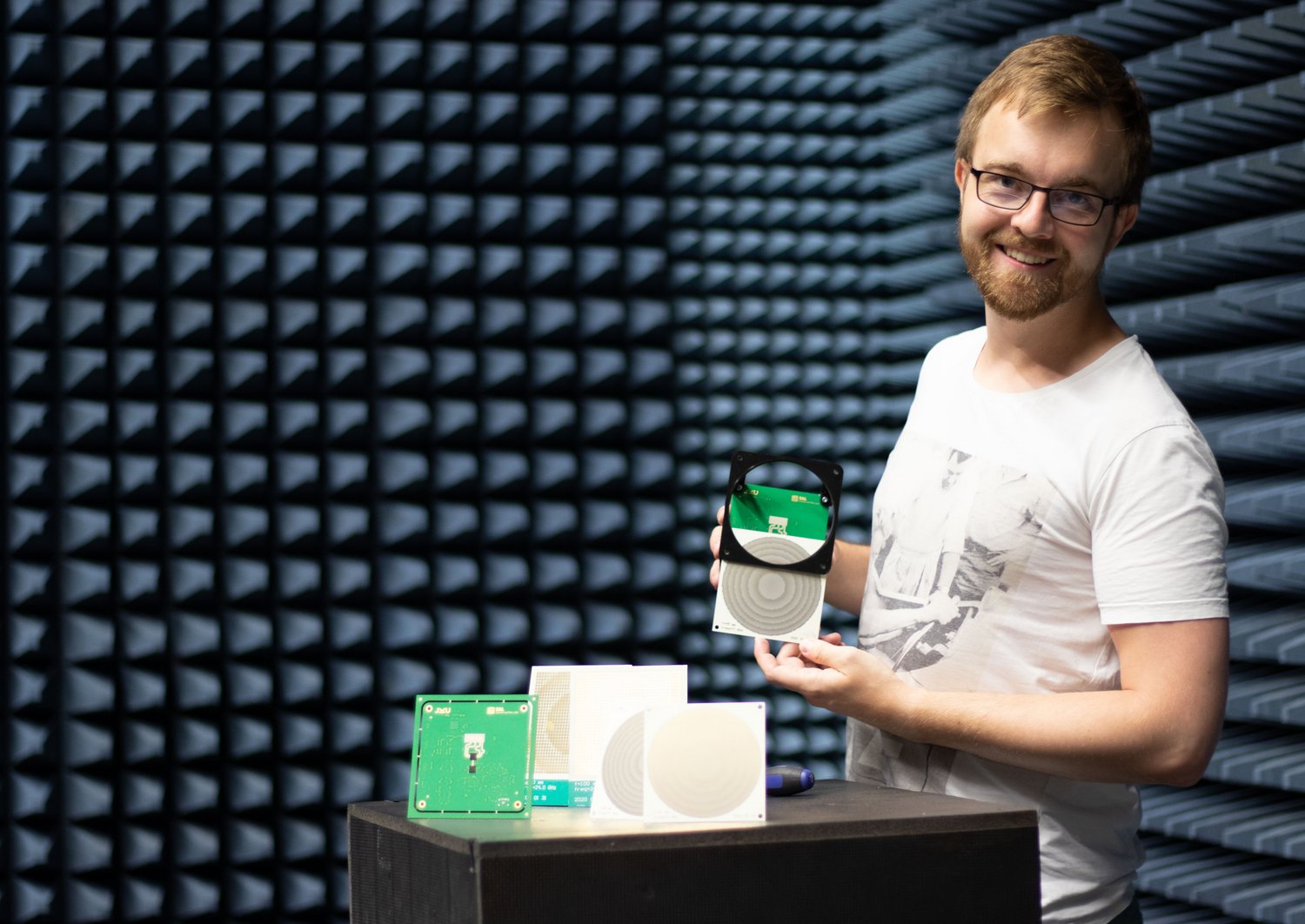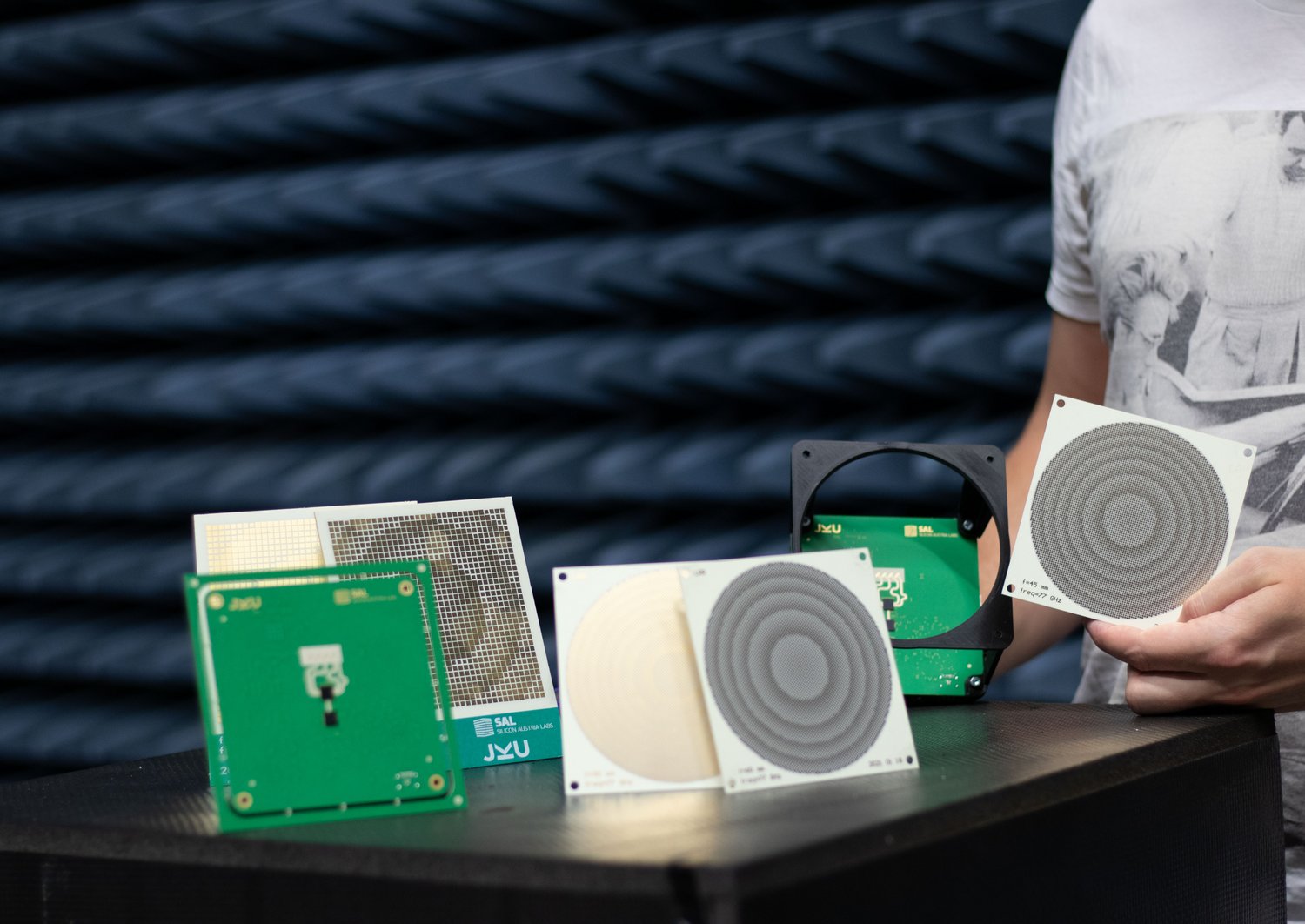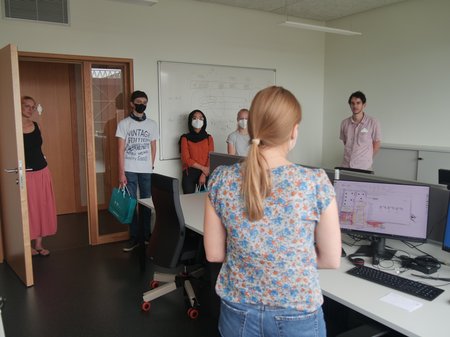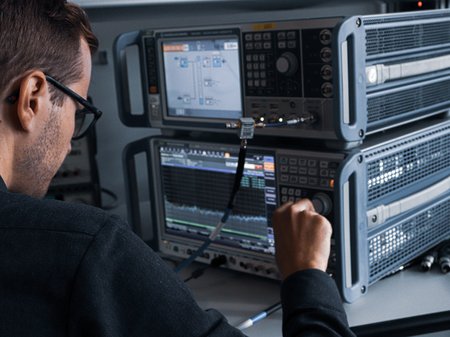Metamaterials are structures made of ordinary materials. However, these ordinary materials have unusual or even impossible properties. In the division RF systems at SAL, researchers are working on creating components from everyday materials such as metals and plastics that affect electromagnetic waves in unusual ways. On the one hand, components such as ultra-thin lenses, perfect reflectors and absorbers, or polarizers manipulate the propagating radiation. On the other hand, integrated structures can significantly support resonators and antennas.
The variety of applications of metamaterials is thus huge and will make an essential contribution to new technologies in communications technology such as 6G, but also in the field of radar and sensor technology.
Active influence of waves by metamaterials
The interesting thing about RF metamaterials is the size of the structural elements, also called meta-atoms. Their size is in the range of a quarter to half a wavelength of the radiation to be influenced. Especially in future emerging frequency ranges from a few GHz up to THz, this results in structures which can also be wired. This will enable the active influencing of waves for radars and communication technology. Due to the ever increasing demands on systems, the use of such components and structures will probably become indispensable.
First promising research successes
In cooperation with Infineon Technologies Linz and the JKU, we are conducting research in the project "Active Metamaterial" on simple grid and array structures made of metal, which will later function as thin lenses and active reflectors. The team has already succeeded in producing such lenses for radar frequencies around 77 GHz in the automotive sector, and the measurement results were extremely promising. In a next step, we will work on controlling the lenses. The researchers are highly motivated for this development: "Our research generates tons of ideas, which we now have to work through," says Christoph Kohlberger, Junior Scientist in the research unit Millimeter Wave Technologies at SAL in Linz. Among other things, he is working on RF metasurfaces, which are two-dimensional metamaterials that influence high-frequency radiation.








